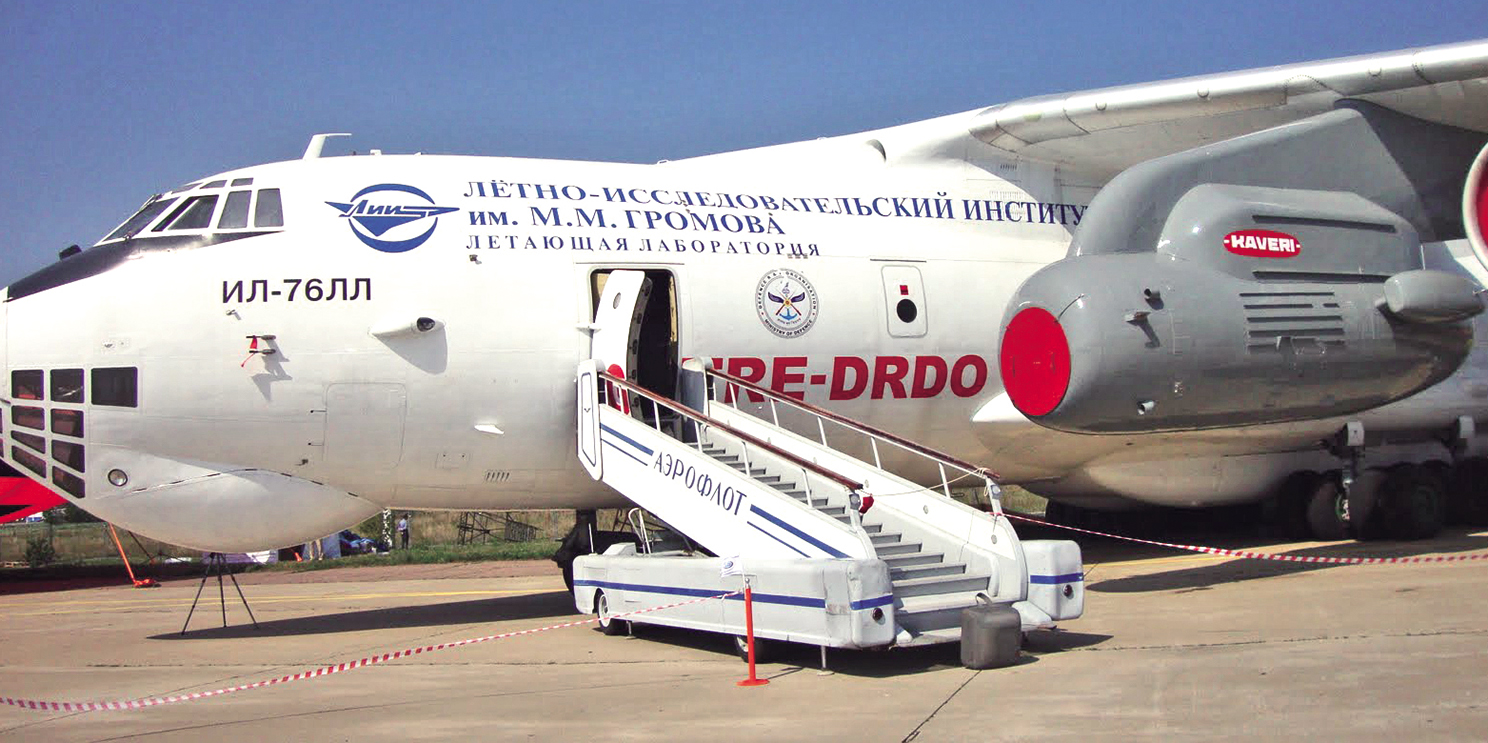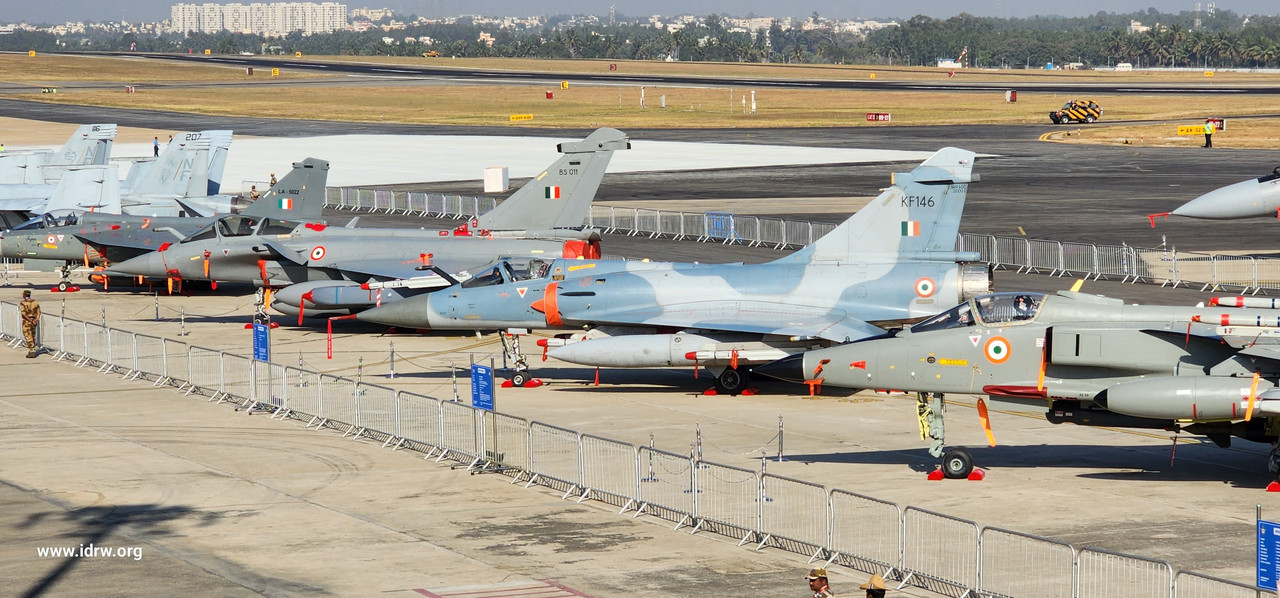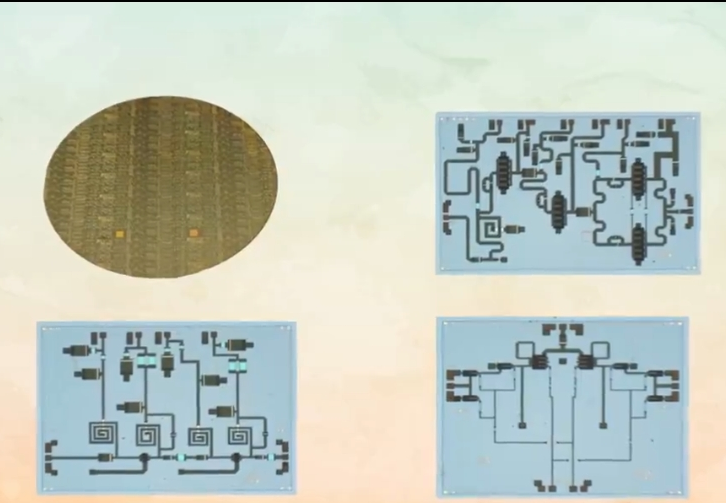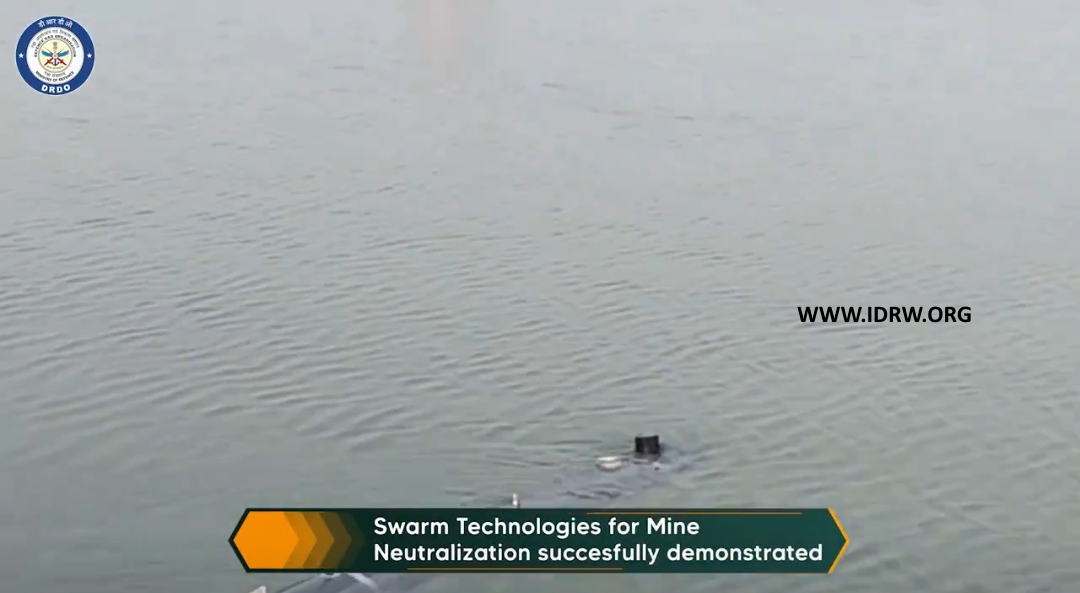Idrw Team
SOURCE: IDRW.ORG TEAM

India’s quest for self-reliance in fighter jet technology takes another step forward with the Gas Turbine Research Establishment (GTRE) advocating for a domestically-developed Flying Test Bed (FTB) to test the new 6th generation engine for the 5th gen AMCA program. This proposal comes after previous attempts to acquire international platforms faced roadblocks.
In the mid-2000s, GTRE sought a modified IL-76 from Russia for the Kaveri engine program but eventually used a Russian-owned IL-76 for testing due to refusal from the supplier. Later, a proposal for a MiG-29A as a test bed for the original Kaveri engine was rejected by the Ministry of Defence (MoD) due to safety concerns and the engine’s unpreparedness for testing on a twin-engine platform.
Continue readingSOURCE: IDRW.ORG TEAM

The Indian armed forces are gearing up for two separate missile tests along the country’s western and eastern coasts, raising eyebrows and sparking speculation about the nature of the upcoming trials.
The first test, scheduled for January 22-23, 2024, will take place in a designated area 240 kilometers off the coast of Karwar in the Arabian Sea. A Notice to Airmen (NOTAM) issued by Indian authorities indicates a ship-based launch, suggesting the test could involve the BrahMos, a potent, Supersonic cruise missile jointly developed by India and Russia. The BrahMos has seen extensive testing and deployment with the Indian Navy and Army, and this latest launch could be aimed at further refining its capabilities or exploring new launch platforms.
Continue readingSOURCE: IDRW.ORG TEAM

In a recent development, a senior-ranking official from the Indian Air Force (IAF) has indicated idrw.org a preference for a Government-to-Government (G2G) deal for the procurement of additional French Dassault Rafale fighter jets. The suggestion comes amid concerns over the lengthy and intricate process of tendering, as witnessed in the MRCA (Medium Multi-Role Combat Aircraft) tender that spanned nearly a decade before being scrapped. The IAF’s urgent need to augment its combat strength, coupled with considerations of efficiency, has prompted this proposition.
The MRCA tender process, initiated to address the IAF’s requirement for medium multi-role combat aircraft, faced protracted delays and complications, ultimately leading to its abandonment. In response to the critical need for bolstering the IAF’s fighter jet capabilities, the Ministry of Defence (MoD) opted for an Emergency Purchase of 36 Rafale fighter jets from Dassault. While this decision helped alleviate immediate concerns, it underscored the urgency for a more efficient and streamlined procurement approach.
Continue readingSOURCE: IDRW.ORG TEAM

In a significant development for India’s quest for self-reliance in defense technology, Engine Factory Avadi (EFA) has successfully repaired the engine of an Arjun Main Battle Tank (MBT) indigenously. This milestone achievement was witnessed by Dr. Samir V Kamat, Secretary/Department of Defence R&D and Chairman DRDO, during his recent visit to the facility on January 7, 2024.
The Arjun tank, currently the backbone of India’s armored warfare capabilities, is powered by the MTU 838 Ka-501 engine, manufactured by MTU Friedrichshafen GmbH of Germany. EFA, a unit of AVNL, took on the challenging task of repairing this complex engine without relying on OEM support, showcasing India’s growing expertise in this critical area.
Continue readingSOURCE: IDRW.ORG TEAM

Nestled within the hallowed halls of IIT Madras, a revolution is brewing. Aerostrovilos Energy, a young startup brimming with innovation, is on a mission to write India’s name in the annals of gas turbine engineering. Their audacious goal: to build the country’s first indigenous micro gas turbine for power generation.
While gas turbines traditionally power airplanes and generate megawatts of electricity, Aerostrovilos is charting a new course. Their focus is on micro gas turbines, compact marvels generating power in the range of tens to low hundreds of kilowatts. This opens up a world of possibilities, from electrifying remote villages to powering distributed grids and even fueling heavy-duty trucks.
Continue readingSOURCE: IDRW.ORG TEAM

Hindustan Aeronautics Limited (HAL), India’s leading aerospace and defense company, is set to take center stage at Wings India 2024, showcasing its indigenous civil aviation platforms – the Hindustan-228 aircraft and the civil variant of the ALH Dhruv helicopter. This prestigious event, held at Begumpet Airport, Hyderabad from January 18-21, 2024, provides a platform for HAL to highlight its commitment to strengthening India’s domestic civil aviation industry.
The Hindustan-228, a 19-seater turboprop aircraft, is designed specifically for regional connectivity and challenging routes. Its robust design, high fuel efficiency, and short take-off and landing capabilities make it ideal for connecting smaller towns and cities with limited airport infrastructure. At Wings India, HAL will showcase the aircraft’s potential for promoting regional economic growth and enhancing accessibility for remote communities.
Continue readingSOURCE: IDRW.ORG TEAM

India’s Defence Research and Development Organisation (DRDO) has made significant strides in the realm of microwave technology, announcing the successful development and implementation of indigenous Gallium Nitride (GaN)-based Monolithic Microwave Integrated Circuits (MMICs) at its Gallium Arsenide Enabling Technology Centre (GAETEC) in Hyderabad. This breakthrough achievement, showcased in DRDO’s Year-End Review for 2023, promises to transform the capabilities of Indian radars and next-generation Electronic Warfare (EW) systems.
GaN offers a significant leap in efficiency compared to the previously employed materials. Its use in the AESA (Active Electronically Scanned Array) radar nearly doubles the TR (Transmit/Receive) module performance. Components utilizing GaN emit approximately five times the RF (Radio Frequency) power compared to earlier technology. This translates to:
Continue readingSOURCE: IDRW.ORG TEAM

The Indian skies witnessed a monumental achievement as the Defence Research and Development Organisation (DRDO) successfully test-fired the New Generation (NG) variant of the Akash air defense system. This test marks a crucial milestone, not just for the Akash program itself, but also for the Indian Air Force (IAF), as it represents the first test of the variant specifically designed for its needs.
A key takeaway from the test was the unveiling of the trailer launcher, developed by R&DE(Engrs) & Electropneumatics, designed specifically for the IAF Akash NG variant. This Static factor caters to the IAF’s requirement for deployment and flexibility in defending its airspace. Unlike the Truck Mounted compact launchers used for the army version, the IAF variant’s trailer-mounted system allows for Static deployment for operational scenarios like to guard forward infrastructure.
Continue readingSOURCE: IDRW.ORG TEAM

A strategic partnership is taking shape in the Indian defense landscape, with the Adani Group committing ?1,500 crore to establish Hyderabad as a hub for manufacturing air-to-surface missiles. This investment, spread over the next two to three years, marks a significant step towards India’s goal of achieving self-reliance in critical defense technologies.
This move signifies a bold diversification for the Adani Group, traditionally known for its presence in coal, mining, and infrastructure. Their foray into high-tech missile manufacturing showcases the ambition and capabilities of Indian private companies to contribute to the nation’s defense needs.
Continue readingSOURCE: IDRW.ORG TEAM

The grand spectacle of the Indian Army’s full-dress rehearsal for the Republic Day parade on January 13th, 2024, held on the majestic Kartavya Path, wasn’t just about marching bands and vibrant displays. It was a showcase of India’s growing military prowess, featuring cutting-edge equipment including the Army Variant of the Medium Range Surface to Air Missile (MRSAM).
Previously, only the Air Force variant of the MRSAM, also known as the “Abhra” weapon system, had graced the Republic Day parade. This year, the unveiling of the Army Variant marked a significant milestone in India’s air defense capabilities.
Continue readingSOURCE: IDRW.ORG TEAM

In a significant stride towards enhancing the bilateral defense ties between the United States and India, U.S. Ambassador Eric Garcetti engaged in an insightful meeting with Amy Gowder, President & CEO of Defense & Systems GE Aerospace. The discussions delved into the robust collaboration on cutting-edge technology and the promising future of the U.S.-India defense partnership. The outcome of the meeting heralds exciting times ahead as both nations join forces to advance their defense capabilities.
One of the key highlights of the strategic partnership is the collaborative effort between Garcetti, GE Aerospace, and Hindustan Aeronautics Limited (HAL) to co-manufacture the F-414 engine within India. This initiative is poised to be a game-changer, with 80 percent of the Transfer of Technology (ToT) stemming from GE Aerospace.
Continue readingSOURCE: IDRW.ORG TEAM

The grand spectacle of the Indian Army’s full-dress rehearsal for the Republic Day parade on January 13th, 2024, held on the majestic Kartavya Path, offered a glimpse into the nation’s military might. Among the cutting-edge equipment and disciplined formations on display, one particular system grabbed the attention of defense enthusiasts: the Mahindra Alakran Vehicle Mounted Infantry Mortar System (VMIMS).
The Alakran, named after the formidable scorpion for its sting and agility, is not your average mortar. While traditional mortars have served as a mainstay of infantry firepower for centuries, their inherent limitations are undeniable. Deploying them can be cumbersome, their mobility is restricted, and they are vulnerable to counter-battery fire. Enter the Alakran VMIMS, a revolutionary system that changes the game.
Continue readingSOURCE: IDRW.ORG TEAM

Andhra Pradesh-based Bhairav Robotics LLP has taken a significant leap forward in Indian robotics with the unveiling of “Shvana,” the country’s first armed quadruped Unmanned Ground Vehicle (UGV). This versatile robot promises to revolutionize security and defense operations across various contexts, from homeland security and border patrol to industrial inspections and disaster response.
Shvana is equipped with a suite of advanced sensors, including cameras, LiDAR, and radar, coupled with powerful processing capabilities and intelligent software. This enables it to navigate complex and challenging terrains, from rugged mountains to urban environments. Its modular design allows for easy integration of various payloads, such as manipulators, weapons systems, and communication equipment, adapting to diverse mission requirements.
Continue readingSOURCE: IDRW.ORG TEAM

Residents of Village near ITR , Chandipur off the coast of Odisha were startled over the weekend by the sight of a seemingly controlled object flying over their heads, particularly in crowded residential areas. This mystery sighting coincides with the Indian Air Force’s test-firing of the Akash NG, a short-range missile system, conducted by the Integrated Test Range (ITR) at Chandipur around 11 pm on Saturday.
Local media outlet Otv Khabar captured footage of the object, sparking heated debate among defense analysts and the public. While some experts believe it could be a Banshee target drone used as a practice target for the Akash NG, others speculate it might be a Akash NG missile chasing a target at a lower altitude, making it visible from a wider range.
Continue readingSOURCE: IDRW.ORG TEAM

The Defence Research and Development Organisation (DRDO) has successfully demonstrated its cutting-edge swarm technology for mine neutralization, marking a significant milestone in India’s underwater defense capabilities. This achievement, showcased during the DRDO Year End Review, promises to revolutionize the way we combat underwater threats like mines and improvised explosive devices (IEDs).
At the heart of this technology lie autonomous underwater vehicles (AUVs), designed to work in tandem and efficiently detect and neutralize underwater targets. The image above captures these AUVs in action, showcasing their sleek design and advanced sensors.
Continue reading